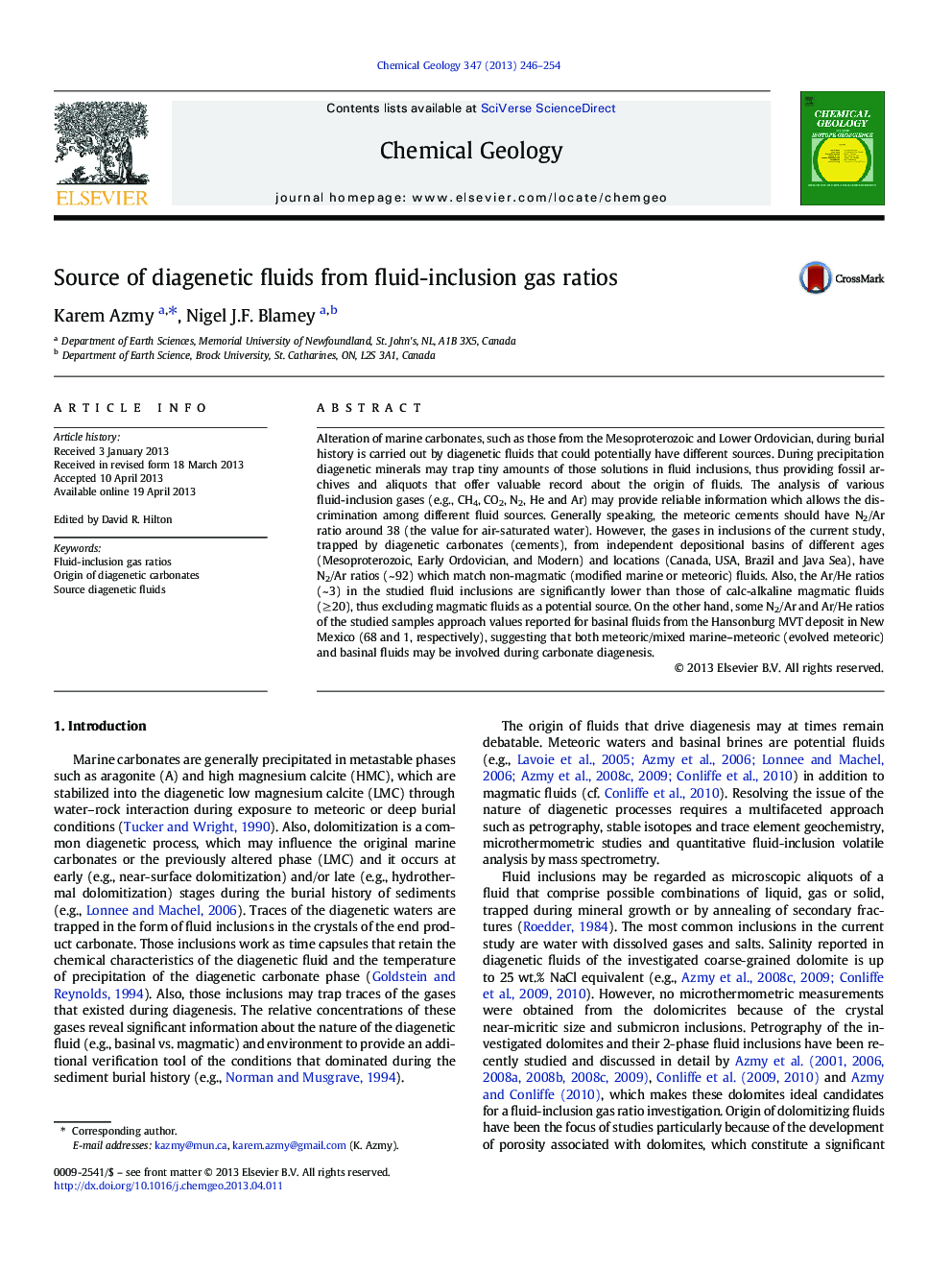| Article ID | Journal | Published Year | Pages | File Type |
|---|---|---|---|---|
| 6436983 | Chemical Geology | 2013 | 9 Pages |
â¢Carbonates of different settings were investigated for fluid inclusion gas ratios.â¢Fluid inclusion gases are indicators of origin of diagenetic carbonates.â¢The N2/Ar, Ar/He, and CO2/CH4 in fluid inclusions reflect the nature of source diagenetic fluids.
Alteration of marine carbonates, such as those from the Mesoproterozoic and Lower Ordovician, during burial history is carried out by diagenetic fluids that could potentially have different sources. During precipitation diagenetic minerals may trap tiny amounts of those solutions in fluid inclusions, thus providing fossil archives and aliquots that offer valuable record about the origin of fluids. The analysis of various fluid-inclusion gases (e.g., CH4, CO2, N2, He and Ar) may provide reliable information which allows the discrimination among different fluid sources. Generally speaking, the meteoric cements should have N2/Ar ratio around 38 (the value for air-saturated water). However, the gases in inclusions of the current study, trapped by diagenetic carbonates (cements), from independent depositional basins of different ages (Mesoproterozoic, Early Ordovician, and Modern) and locations (Canada, USA, Brazil and Java Sea), have N2/Ar ratios (~ 92) which match non-magmatic (modified marine or meteoric) fluids. Also, the Ar/He ratios (~ 3) in the studied fluid inclusions are significantly lower than those of calc-alkaline magmatic fluids (â¥Â 20), thus excluding magmatic fluids as a potential source. On the other hand, some N2/Ar and Ar/He ratios of the studied samples approach values reported for basinal fluids from the Hansonburg MVT deposit in New Mexico (68 and 1, respectively), suggesting that both meteoric/mixed marine-meteoric (evolved meteoric) and basinal fluids may be involved during carbonate diagenesis.
